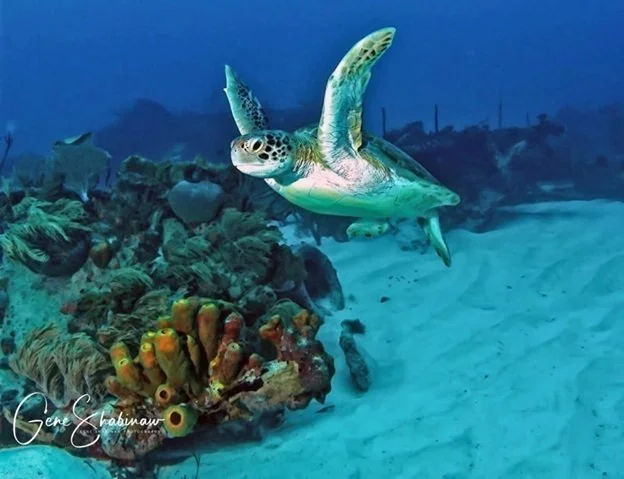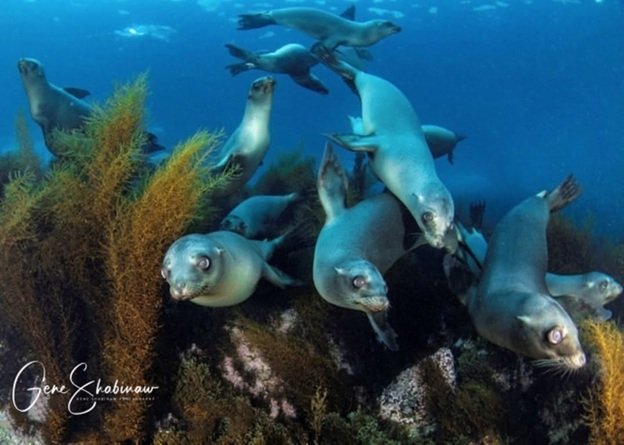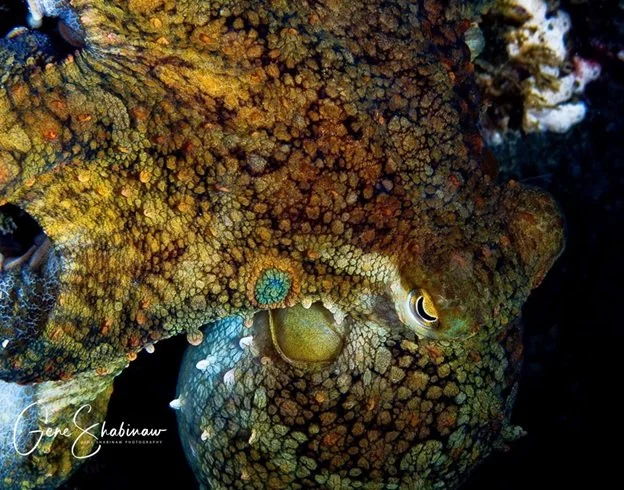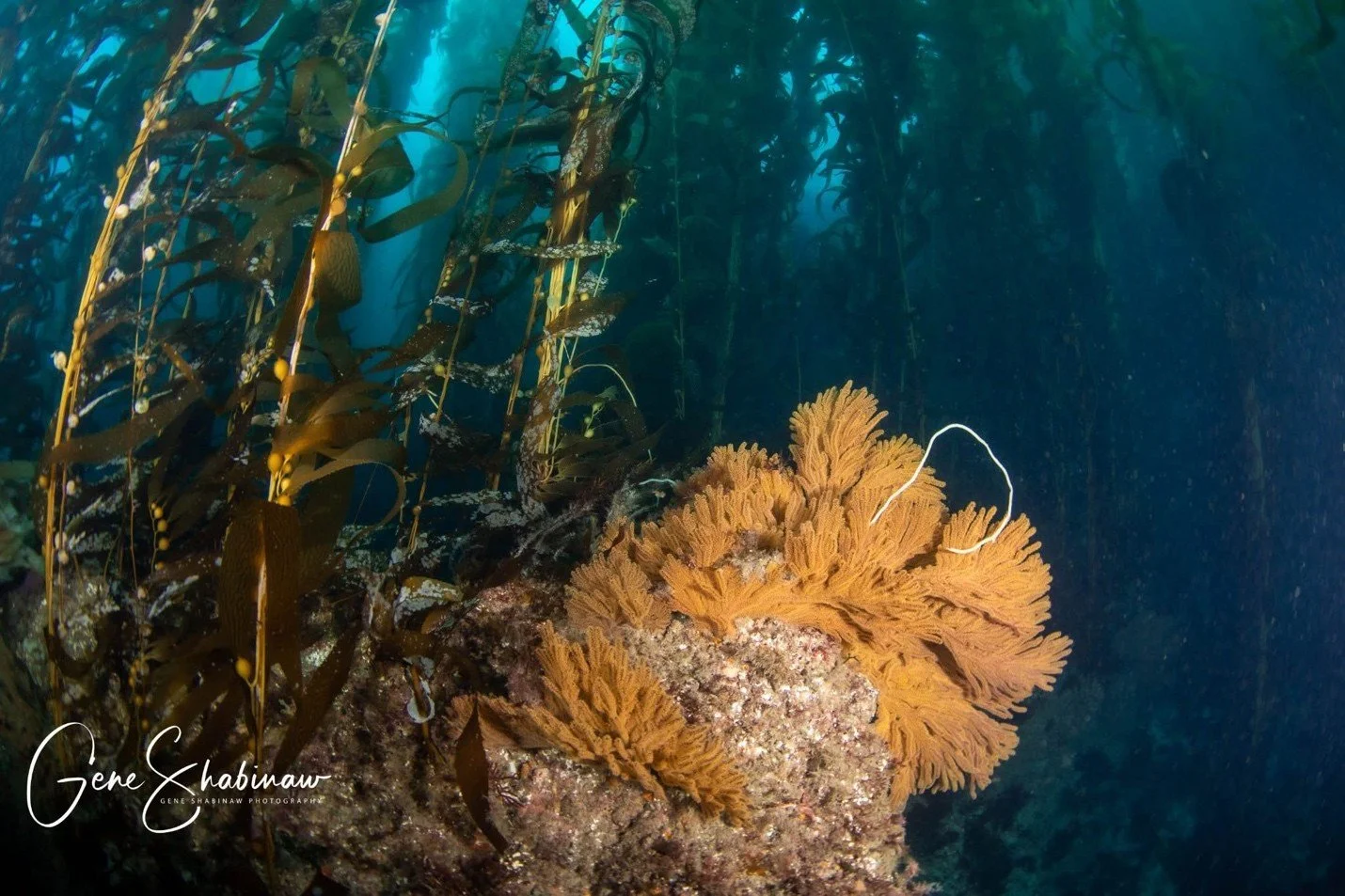Beneath the Waves: A Guide to Underwater Photography with Gene Shabinaw
Underwater photography is one of the most challenging yet rewarding forms of image-making. It combines the technical demands of diving with the artistic pursuit of capturing life beneath the waves — from the shimmering patterns of sunlight on coral reefs to the fleeting glance of a curious fish. It requires specialized equipment, patience, and an understanding of how light behaves in an environment that constantly shifts with the currents.
A Different World Beneath the Surface
Once submerged, everything changes — colors fade, contrast flattens, and visibility becomes a living, breathing variable. The ocean offers photographers a completely different palette and rhythm compared to land photography. Scenes can vary from the vibrant blues and purples of a shallow tropical reef to the muted greens and grays of a kelp forest. Marine life, too, moves unpredictably; photographing it demands both anticipation and respect for the creatures being documented.
Equipment Essentials
1. Camera and Housing
Underwater photographers often use DSLRs or mirrorless cameras in waterproof housings made of acrylic or aluminum. Each housing must fit the specific camera model to maintain full control of settings and prevent leaks. Compact cameras with dedicated housings also provide great results for beginners.
2. Lenses and Ports
Wide-angle lenses are ideal for capturing large subjects — such as manta rays, shipwrecks, or coral landscapes — because they allow photographers to get close while including broad scenes. Macro lenses, on the other hand, are perfect for small subjects like nudibranchs, shrimp, and coral polyps. Dome ports are used for wide-angle lenses to correct for underwater distortion, while flat ports suit macro work.
3. Lighting Equipment
Because water absorbs light — especially reds and yellows — artificial light is essential. Strobes or video lights restore true color and contrast, making subjects appear as they do in natural daylight. Photographers also learn to use natural light creatively, especially in shallow water, where the sun’s rays produce ethereal beams known as “God rays.”
Understanding Light Underwater
Light behaves very differently beneath the surface. At just five meters deep, red wavelengths almost completely disappear, followed by orange and yellow as depth increases. This results in blue or green color casts.
To counteract this, photographers can:
Use strobes or flash to reintroduce color.
Adjust white balance manually.
Shoot close to the subject to minimize the volume of water (and color loss) between camera and subject.
Experiment with ambient light during sunrise or sunset dives, when the quality of light is warm and directional.
Techniques for Stunning Underwater Images
Get Close and Then Get Closer
Water reduces sharpness and contrast, so minimizing the distance between the camera and the subject is crucial. “Fill the frame” is a golden rule.Shoot Upward
Framing subjects against the surface light or open water adds drama and separation. Silhouettes of divers or marine animals against sun rays are classic compositions.Control Buoyancy
Perfect buoyancy allows you to hover motionless, preventing disturbance of the seabed or coral while maintaining a steady position for shooting.Use Manual Settings
Automatic exposure can be fooled by the reflective nature of sand or water. Manual control gives better consistency and creative control over exposure and color balance.Composition and Storytelling
Compose with purpose — capture behavior, relationships, and patterns. A well-framed image of a turtle gliding through a coral canyon tells more than a simple portrait.
Safety and Environmental Ethics
Responsible underwater photography means respecting the marine environment. Photographers must:
Never touch or chase marine life.
Avoid stirring sediment or damaging corals.
Practice excellent buoyancy to prevent contact.
Follow local regulations regarding protected areas and species.
Capturing the beauty of the ocean also carries a responsibility: to inspire conservation and awareness through images that reveal what is often unseen.
Post-Processing and Color Correction
Editing is an essential step to restore natural hues and contrast lost underwater. Tools like Adobe Lightroom or Photoshop can adjust:
White balance and tint (to remove excess blue/green).
Exposure and contrast (to enhance depth).
Clarity and sharpness (to bring out texture in marine life).
A light touch is key — the goal is to recreate the scene as it appeared to the diver, not to over-process it.
The Rewards of Underwater Photography
Few forms of photography offer such an intimate connection with nature. Each dive brings the possibility of a new encounter — a school of batfish swirling like silver ribbons, a tiny nudibranch the size of a fingernail, or the quiet mystery of a shipwreck reclaimed by the sea.
The challenges — equipment, technique, and environment — only heighten the satisfaction when the image succeeds. Underwater photography allows us to share the hidden world below the surface, reminding us that the oceans are not distant realms but vital, living parts of our planet.
Underwater photography is both art and adventure — a union of technical mastery, patience, and deep appreciation for marine life. It invites photographers to explore not just what lies beneath the waves, but the relationship between light, water, and life itself. Each image captured is a moment suspended in the fluid world of the sea — fleeting, fragile, and profoundly beautiful.













